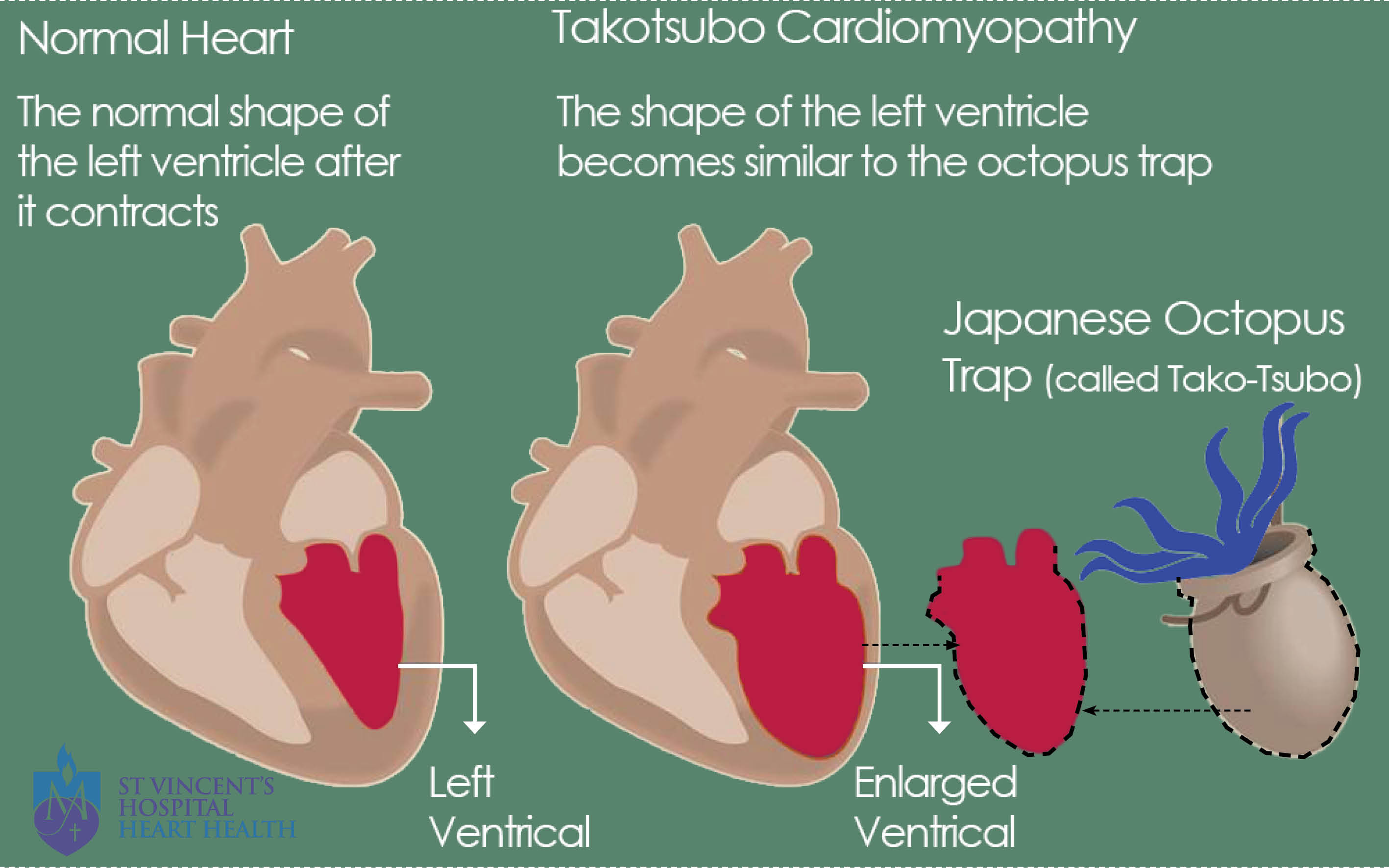Takotsubo Cardiomyopathy
Takotsubo cardiomyopathy or "Broken Heart Syndrome" is when the heart muscle becomes suddenly stunned or weakened. It mostly occurs following severe emotional or physical stress. The condition is temporary and most people recover within two months.
What is Takotsubo cardiomyopathy?
What are the causes of Takotsubo cardiomyopathy?
What are the signs and symptoms of Takotsubo cardiomyopathy?
What are the possible tests to diagnose Takotsubo cardiomyopathy?
What are the possible treatments for Takotsubo cardiomyopathy?
What is the plan if you have Takotsubo cardiomyopathy?
What is Takotsubo cardiomyopathy?
Takotsubo cardiomyopathy is a temporary heart condition that develops in response to an intense emotional or physical experience. It’s also known as stress cardiomyopathy or broken heart syndrome.
In this condition, the heart’s main pumping chamber changes shape, affecting the heart’s ability to pump blood effectively.
The heart’s chamber looks similar to a Tako -Tsubo pot, which is a Japanese fishing pot used to catch octopus.
This diagram below shows Takotsubo cardiomyopathy.

The video below shows the normal shape of the ventricle after is contracts.
The video below shows the shape of the ventricle in Takotsubo cardiomyopathy.
What are the causes of Takotsubo cardiomyopathy?
Takotsubo cardiomyopathy is brought on by an extremely stressful physical or emotional event.
Common triggers can include the death of a loved one, a serious accident, a fierce argument, an unexpected loss or a sudden illness. These triggers are the reason for the condition’s nickname, broken heart syndrome.
Takotsubo cardiomyopathy can occur at any age in both men and women, but it mostly affects older women.
What are the signs and symptoms of Takotsubo cardiomyopathy?
The main symptoms are sudden chest pain, shortness of breath or fainting - usually after feeling severe stress.
These symptoms are similar to those of a heart attack, so if you experience these symptoms, call an ambulance straight away (dial 000 if in Australia).
What are the possible tests to diagnose Takotsubo cardiomyopathy?
Your doctor will perform several tests to rule out a heart attack and confirm your diagnosis. You may need one or more of the following tests to determine the cause of your symptoms:
- ECG – an electrical recording of your heart’s action
- Blood test – to check for enzymes that indicate damage to the heart muscle
- Echocardiogram – an ultrasound of your heart which studies the heart’s shape and detects any abnormal movements of the main pumping chamber
- Coronary angiogram - to check the blood flow through your heart’s blood vessels (coronary arteries). People with Takotsubo cardiomyopathy don’t have a blockage in their coronary arteries, whereas in heart attacks there is a blockage.
What are the possible treatments for Takotsubo cardiomyopathy?
Medication is the most common treatment. Medication will reduce the stress on your heart and help your heart muscle recover, and most people only need to take it for a short time. Still, it’s important to follow the treatment and medication plan your doctor has given you.
If you’re unsure about your treatment plan or have any questions, speak to your doctor.
What is the plan if you have Takotsubo cardiomyopathy?
The good news is that the heart muscle usually heals within 2-4 weeks, and most people fully recover within two months. You may need regular follow-ups with echocardiograms to check your heart’s recovery.
It is important to manage any physical or emotional stress that may have triggered your condition. Speak to your doctor or cardiac rehabilitation team, as they are the best people to help you.
Cardiac rehabilitation teaches you how to stay healthy, feel more confident managing your condition and reduce the chance of getting sick again.
Find out more about how cardiac rehabilitation can benefit you.